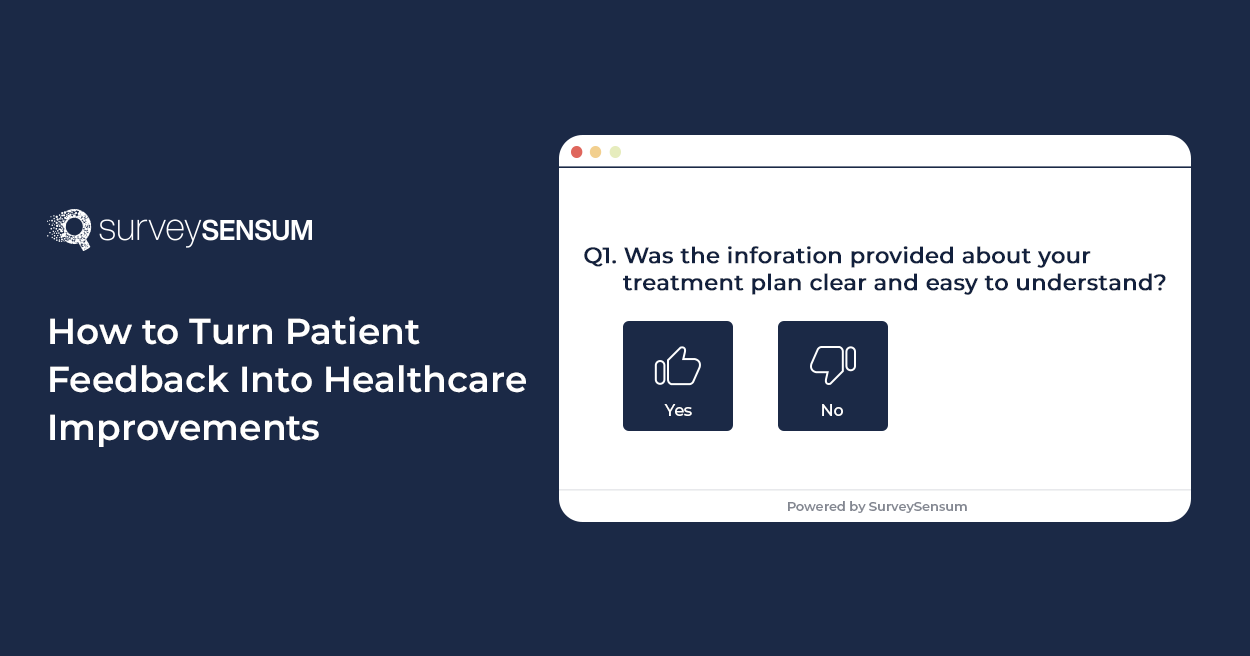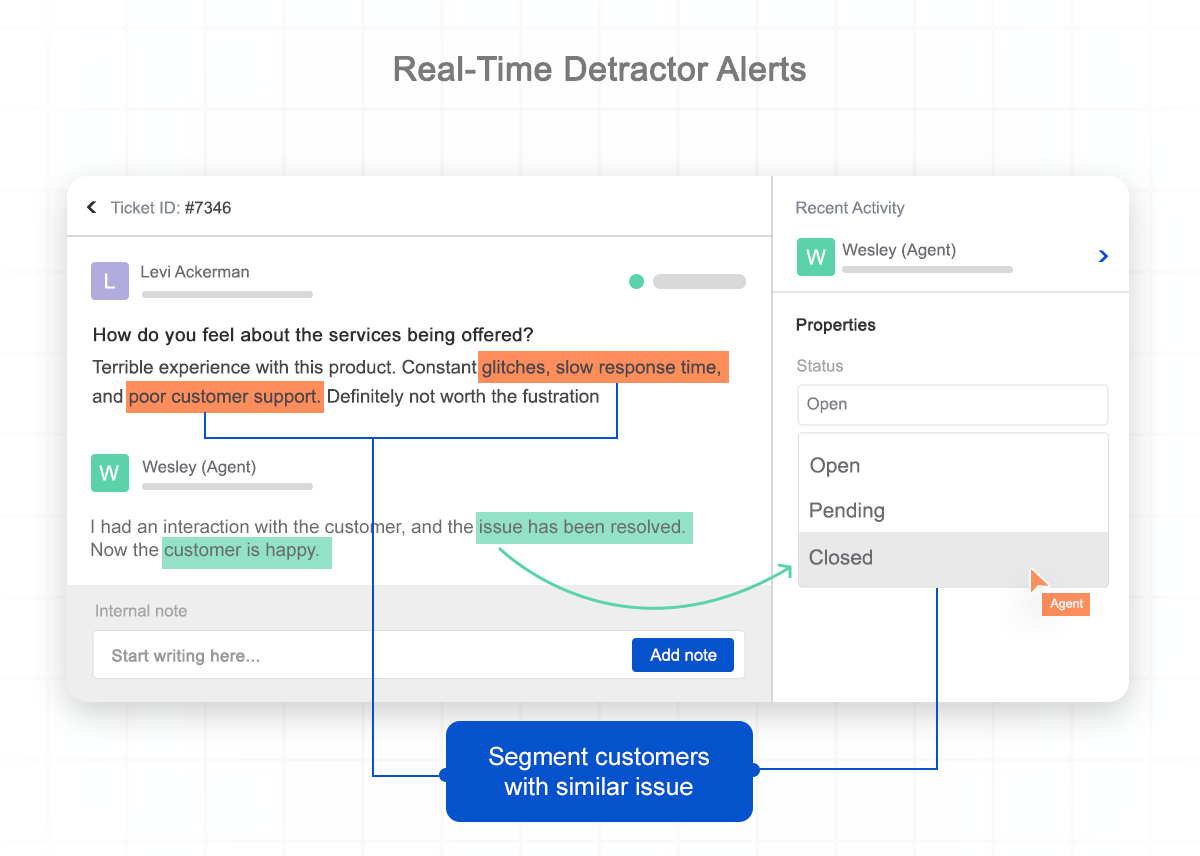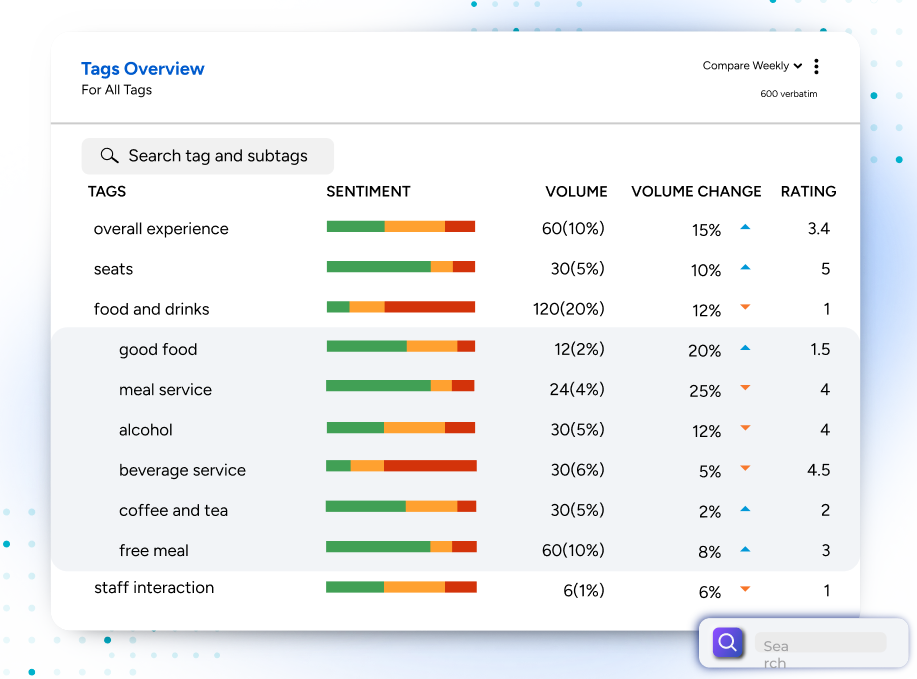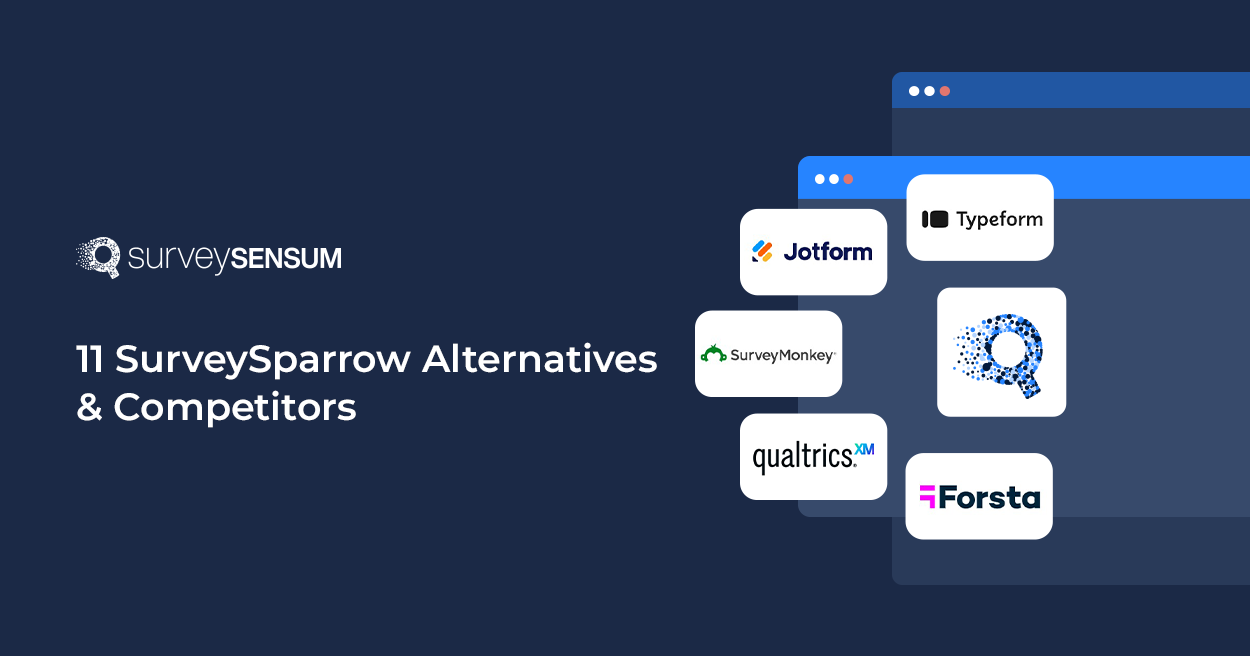

Patient Feedback: Your Secret Weapon for Better Care

Are you truly listening to your patients?
Because here’s something to think about: two out of three patients have had a negative experience with a healthcare provider.
That’s nearly half of your patients walking away with frustration that could’ve been avoided.
That’s why collecting patient feedback is key to improving care where it matters most. With the right patient satisfaction survey, you can uncover what’s working, fix what’s not, and create an experience where patients feel heard.
So, are you listening? And more importantly, are you acting on it?
Let’s talk about that.
What is Patient Feedback?
Patient feedback refers to the insights and evaluations provided by patients about their healthcare experiences, covering everything from the quality of clinical care to the efficiency of administrative processes.
It is collected through patient satisfaction surveys, direct interviews, or digital channels, offering a snapshot of the patient’s perspective on the care they received.
By using patient feedback for quality improvement, healthcare facilities can ensure a more responsive, patient-centric environment. The insights garnered inform everything from patient experience metrics to clinical protocols and administrative workflows.
Why is Patient Feedback So Important for Healthcare Providers?
Whether it’s improving your patient experience, enhancing care, or building a solid reputation, feedback is the key that unlocks all these doors. Let’s dive into the importance of patient feedback.
1. It Puts Patients at the Heart of Care
When you ask patients for their feedback, you’re sending a strong message: You care about their experience. Collecting feedback through a patient satisfaction survey gives you valuable insights into areas of improvement, helping you create a more patient-centered care experience.
With a hospital feedback system, you can act quickly, improving wait times and workflows, and ultimately, creating a better patient experience.
The goal? Delivering better care — faster and more patient-focused.
2. The Key to Unlocking Better Patient Satisfaction
If you’ve been receiving feedback from your patients saying their visits feel too short, there’s an opportunity to extend appointments and give patients more time with their doctors. You know that a happy patient is a loyal patient, right?
In fact, 94% of patients who rate their experience as “very good” are not just satisfied — they’re likely to return for future care and recommend your practice to others. This is where patient satisfaction surveys come into play. When you’re consistently gathering feedback, you’re already one step ahead in boosting patient satisfaction. The more you listen, the more you improve, and the happier your patients become.
Whether it’s through simple patient satisfaction surveys or more detailed 1:1 interviews, feedback allows you to fine-tune your services to meet patient needs.
3. Building a Loyal Patient Base and Gaining Referrals
Happy patients stick around and refer others — no surprises there, right? When patients feel valued and receive great care, they’re not just coming back — they’re spreading the word.
Let me put some stats into perspective:
- 75% of patients are “very likely” to forgive an organization for a mistake if they think the overall customer experience was excellent. So, even if something goes wrong, as long as your patients feel well cared for, they’ll stick with you.
- 50% of patients rely on personal recommendations when choosing a healthcare provider. Word of mouth is still king when deciding on a provider.
- And here’s a big one: 84% of consumers trust online reviews just as much as a personal recommendation. Yes, those reviews matter, and patient reviews in healthcare can shape your reputation in a significant way. Whether it’s a review or direct feedback, your patients’ opinions matter and can directly impact your hospital feedback system.
So, if your patients are saying amazing things about you on your patient satisfaction surveys — whether it’s face-to-face or in a review — that’s your reputation on the line.
And when you deliver a better patient experience, you witness higher patient retention, better satisfaction scores, and a reputation for delivering great care.
4. Enhances Your Reputation in the Industry
When it comes to healthcare, your online reputation speaks volumes. Did you know that 94% of healthcare patients use online reviews to evaluate providers? That means your digital footprint is working harder than you think!
In fact, almost 50% of patients are willing to go outside their insurance network if they find glowing reviews for a healthcare provider. If you’re not actively managing your reviews, you’re potentially missing out on a lot of new business.
Proactive review management is key to maintaining a strong online reputation in today’s healthcare world. Using patient feedback for quality improvement is your chance to fine-tune your practice, transform patient experiences, and build a reputation that speaks volumes.
Plus, when you improve your services based on patient satisfaction surveys, you create a feedback loop in healthcare that continues to drive better outcomes.

SurveySensum enables you to customize the “Thank You” screen with a personalized message and a prompt to share feedback. It uses conditional logic to identify promoters and redirect them to your Google Review page or app store listing after survey completion.
Example Message:
“Thank you for your feedback! We’re thrilled to hear you’re enjoying our service. Would you consider sharing your experience by leaving a review on [Google Playstore]?”
5. Identifying Issues Before They Snowball
How do you know if your efforts to improve care are working? The answer: regular patient satisfaction surveys. When you collect patient feedback consistently, you can set benchmarks, track progress, and measure the impact of changes over time.
Consider this: 43% of millennials are likely to switch healthcare providers if their needs aren’t met. If you start noticing recurring issues — like slow response times or poor communication — don’t wait for them to become bigger problems.
Addressing pain points early can retain more patients and improve overall satisfaction. For example, if you start implementing changes to the online booking system based on patient experience metrics, you can track whether satisfaction scores improve in your following survey. This data-driven approach ensures that you’re always on the right track.

Leverage SurveySensum’s built-in ticketing system to instantly identify detractors from your surveys. Automatically create support tickets, assign them to the right teams, and take immediate action – so you can close the loop quickly and turn negative experiences into customer wins.
Now that we’ve seen the importance of patient feedback, let’s dive into why surveys are the most effective way to capture, analyze, and act on it.
Why Surveys Are Your Best Tool for Collecting Patient Feedback (Not Just a Checkbox)
Patient feedback isn’t just a feel-good metric — it’s the heartbeat of better care. And the patient satisfaction survey? They’re the stethoscope. Whether you’re a single clinic or a multisite hospital network, surveys help you go beyond assumptions and straight into action.
Here’s why surveys are essential in healthcare feedback management.
1. Track & Measure Performance Across Clinics
Healthcare isn’t one-size-fits-all — but your quality standards should be. If you’re managing multiple locations, chances are, not every patient’s experience is created equal. But without real-time patient feedback, how do you even know where things are slipping? That’s exactly why a hospital feedback system is crucial — it connects the dots between patient perception and performance.
Use-Case
A multi-specialty hospital chain started noticing inconsistent patient reviews across its locations, but internal audits didn’t reveal much. They launched a simple, automated patient satisfaction survey post-discharge. The results showed that while five locations scored high, one branch had repeated issues around long wait times and poor explanations of medication.
Without these patient satisfaction surveys, that location would’ve continued quietly underperforming. With the data in hand, leadership added staff and retrained doctors on bedside communication.
Impact: Surveys allow you to benchmark and compare patient satisfaction across clinics, departments, or even entire healthcare networks. Dental software programs can complement these surveys by providing centralized dashboards that track patient feedback trends across multiple branches in real-time.
- Identify underperforming locations and services quickly
- Standardize high-quality care across every touchpoint
- Strengthen brand reputation with consistent patient outcomes
Get started instantly with SurveySensum’s ready-to-use, built-in survey templates. Whether it’s NPS, CSAT, CES, or custom feedback – you can launch surveys in just a few clicks and start collecting insights in minutes.

2. Get Honest, Actionable Feedback Through Anonymity
Not every patient will voice their concerns in person. Whether it’s awkwardness, fear of sounding rude, or just being too exhausted post-treatment — many things go unsaid. Anonymous healthcare feedback surveys open the door to honest, unfiltered truth, providing you with actionable insights on how to collect patient feedback effectively.
Use-Case
A fertility clinic noticed its online reviews were positive, yet patients weren’t returning. So, they rolled out anonymous post-visit surveys — short, empathetic, and open-ended.
The responses revealed a pattern: patients felt emotionally unsupported and found the front desk cold and transactional. With survey data, they added sensitivity training, hired a patient counselor, and adjusted communication protocols.
Impact: Anonymity in surveys allows you to:
- Gain uncensored feedback that helps you spot hidden issues
- Encourage feedback from all demographics, including vulnerable patients
- Build trust by showing patients that privacy is respected
- Make changes based on real experiences, not assumptions

With SurveySensum, you can generate individualized, unique survey links for each respondent — making feedback collection more targeted, trackable, and secure. Whether you’re sending surveys via email, CRM, or internal tools, each unique link is tied to a specific customer
3. Use Pre-Service Surveys to Design Better Experiences
Some initiatives feel good on paper, but flop in practice. That’s why the importance of pre-service surveys becomes crystal clear when making service or operational changes. It gives your decisions a patient-first lens.
Use-Case
A large pediatric hospital was planning to launch a mobile app for appointment booking, lab results, and doctor Q&A. Before investing heavily, they sent a survey asking parents what features they’d find most useful. Surprisingly, most didn’t care about app chat — but strongly wanted a way to schedule multiple sibling appointments in one go.
The hospital re-scoped the app with a sibling appointment feature front and center.
Impact: Surveys give you the power to align changes with actual patient experience metrics.
- Prioritize innovations that patients actually want and use
- Avoid wasted investment in low-impact features or tools
- Improve patient satisfaction with services that feel intuitive and helpful
- Make strategic decisions based on real-time healthcare feedback
4. Monitor Healthcare Staff Performance
You can’t be in every room at once — but your patients are. Their feedback on staff behavior and communication offers an unfiltered, real-world view into how your team is performing. Post-visit patient surveys can uncover major wins — and red flags — about your staff’s bedside manner and communication.
Use-Case
A high-end diagnostic center had invested in top-tier doctors and advanced machines — but still got low satisfaction scores. By collecting feedback through post-visit surveys, they learned that patients felt rushed, confused about instructions, and didn’t know who to contact afterward.
Post-survey analysis, leadership added soft-skill training, reworked patient communication scripts, and introduced follow-up calls.
Impact: Patient reviews in healthcare offer you to:
- Spot gaps in bedside manner, clarity, and communication
- Drive staff training based on real-world patient interactions
- Recognize and reward staff members who deliver outstanding patient care
- Improve staff accountability and professionalism without micromanaging
5. Create a Continuous Feedback Loop
Collecting feedback once a year is like checking your vitals once a decade — too little, too late. Automated patient feedback surveys keep the feedback loop alive and actionable — day in, day out.
Use-Case:
A network of dental clinics was slammed with negative online reviews about wait times and call center delays. They responded by implementing automated post-visit surveys sent within 24 hours of appointments.
Within a week, they had hundreds of responses flagging issues with appointment rescheduling. The data pushed them to enable online booking and WhatsApp reminders.
Impact: A real-time feedback loop can help you:
- Spot systemic issues early and course-correct in real-time
- Build a culture of continuous improvement, not reactive
- Automate survey collection to reduce staff workload
- Turn feedback into action quickly — and show patients their voices matter
For improving patient experience with feedback, you need to listen with intent — at every step of the patient’s journey — and act on what you learn. That means meeting your patients where they are, asking the right questions at the right time, and making feedback a two-way street. Let’s decode how.
How to Collect Patient Feedback at Various Touchpoints (And Actually Make It Count)
Not every touchpoint is created equal. Patients interact with your healthcare facility through multiple channels — from online appointment booking to post-discharge follow-ups. Each of these is a chance to collect insights, build trust, and improve the overall experience.
Let’s break down the how — how to leverage surveys across critical patient journey touchpoints, and what patient survey questions for hospitals make feedback meaningful.
1. Arrival and Check-In
“First impressions in healthcare matter just as much as first diagnoses.”
This is where anxiety, confusion, and expectations all collide. Patients want to feel welcomed, not overwhelmed. A friendly, seamless check-in sets the tone for the rest of the experience. This is where a well-designed hospital feedback system comes in handy — automating and simplifying collection without disrupting flow.
How to collect patient feedback here:
- Set up tablet kiosks or QR code posters right at the front desk.
- Keep surveys short — 1–3 questions max — to avoid disrupting the flow.
- Collect responses while patients wait (or immediately after check-in).
- Ask just 2–3 targeted patient survey questions for hospitals to keep it light but useful.
What to ask:
- Was the check-in process smooth and easy to follow?
- Were our front-desk staff courteous and helpful?
- How long did you wait before being attended to?
My Tip: Use visuals (like smiley face scales) to make it easy for older patients or non-native speakers to respond quickly.
2. During or After the Consultation
“Patients remember how you made them feel — not just what you prescribed.”
The consultation is the heart of the healthcare experience. It’s where communication, empathy, and expertise converge. If a patient leaves confused or unheard, you’ve got a problem.
How to collect patient feedback here:
- Use a tablet-based feedback form handed over by the nurse or assistant before the patient leaves the room.
- Trigger an automated SMS or app-based survey 15–30 minutes after the consultation ends.
- Integrate feedback into your EHR system to track provider performance and patient experience metrics.
What to ask:
- Did you feel heard and understood during your consultation?
- Was your condition and treatment plan explained clearly?
- Did the doctor spend enough time with you?
- Were your concerns taken seriously?
My Tip: Time your surveys right — send them when the interaction is fresh, but not rushed. Patients tend to reflect more accurately with a little distance.
3. Post-Treatment or Discharge
“This is when patients reflect on the entire experience.”
Whether it was a short procedure or a hospital stay, patients will now judge the overall quality of care — were they cared for, informed, and respected? A strong feedback loop in healthcare should be incorporated right here.
How to collect patient feedback here:
- Send a discharge survey within 24–48 hours via email or SMS.
- Use personalized questions based on treatment or ward.
- Include an open comment box for additional thoughts — this is where gold often hides.
What to ask:
- How would you rate the care you received during your stay?
- Were you clearly informed about post-treatment instructions?
- Was the discharge process organized and timely?
- How well were your comfort and privacy maintained?
My Tip: Use NPS here to gauge loyalty: “How likely are you to recommend us to a friend or family member?”
4. Follow-Up Appointments
“Consistency builds loyalty. One bad experience breaks it.”
Follow-ups are your chance to continue the conversation and strengthen the relationship. But many patients drop off at this stage due to delays, confusion, or impersonal care. This gap often stems from missed reminders, unclear instructions, or lack of personalized attention — areas where a virtual healthcare assistant can step in to streamline communication, coordinate scheduling, and keep patients engaged post-visit.
How to collect patient feedback here:
- Add a 1-click feedback link in appointment reminders or confirmations.
- Run a short post-appointment survey via email or patient portal.
- Track recurring complaints about scheduling, delays, or gaps in care.
What to ask:
- Was it easy to schedule and attend your follow-up appointment?
- Did your care provider review your past treatment effectively?
- Were you seen on time?
My Tip: Map trends over time — if your follow-up feedback dips, it’s a signal to review your care coordination or appointment system.
5. Ongoing, General Experience
“Not every patient fits neatly into a timeline — and that’s okay.”
Patients may interact with your pharmacy, lab, and telehealth services, or browse your website. You need an ongoing, always-on way to collect thoughts that don’t fit into one specific stage. If patients struggle with scheduling or feel forgotten, it breaks continuity — and trust.
How to collect patient feedback here:
- Embed feedback widgets on your website, mobile app, or patient portal.
- Use chatbot-based surveys for quick engagement post-service.
- Place QR code posters in waiting lounges, labs, or cafeterias.
What to ask:
- Did you find what you were looking for today?
- How was your experience with our online services?
- Is there anything we can do to make your visit more comfortable?
- Was our communication clear and helpful?
My Tip: Keep this general feedback visible and inviting. Many patients will skip it unless prompted subtly but clearly.
Now that you’ve gathered feedback, what’s next? Let’s talk about how to use it to improve patient satisfaction, strengthen your hospital feedback system, and use patient feedback for quality improvement across the care journey.
From the waiting room to recovery room, you can get AI-powered ways to capture every heartbeat of the patient journey with SurveySensum.
6 Steps to Act on Patient Feedback Effectively
The real value of feedback comes when you act on it — quickly, consistently, and with purpose. When done right, it can improve satisfaction scores, drive operational excellence, and uncover new opportunities for care innovation.
Let’s break it down into actionable steps you can implement today.
1. Gather and Analyze Patient Feedback Data
To take action, you need accurate and complete data — and that means gathering feedback from all critical touchpoints across different stages of journey: appointment scheduling, waiting rooms, post-discharge, follow-ups, etc. Don’t wait for patients to complain — proactively ask for their input.
Here’s what you can do:
- Start with customizable healthcare-specific templates and question types (MCQs, star ratings, open-text, Likert scales — you name it). Use advanced logic to personalize the flow and collect relevant feedback at every touchpoint.

- Don’t limit yourself to just one format. Combine structured surveys (CSAT, NPS, CES) with open-text responses to get numbers and narratives.
- Once collected, the next step is analysis. Manually reviewing every comment can take forever — and you risk missing patterns.

That’s where advanced analytics comes in. SurveySensum’s AI-powered text analytics software identifies recurring issues, emotional tone, and root causes. AI can be your best pal to categorize feedback and prioritize critical issues from multiple channels, so you’re not just swimming in data, but seeing what needs fixing.
Patients express more than words. SurveySensum’s text analysis captures the emotional pulse behind every response — so you can lead with insight and empathy.
2. Trigger Responses to Every Feedback
Many healthcare organizations collect feedback… and then let it sit.
But patients expect acknowledgment — especially when they share concerns or criticism. Timely responses show them you’re listening and that their voice matters. That’s why responding quickly and consistently is essential.
Here’s how to do it:
- Set up rules to auto-respond to common queries or thank patients for their input.
- Escalate urgent or negative feedback to the right department with predefined triggers.
- Use personalization — mention their concern specifically when replying.

SurveySensum’s intelligent ticketing system automatically routes customer issues to the right people — instantly. The system ensures that every detractor or negative response is converted into a support ticket and assigned to the right team or agent based on predefined rules. No manual handoffs. No delays.
3. Diagnose the Root Cause — and Plan Action
Once feedback is analyzed, don’t stop at identifying what went wrong. Go deeper — ask why and place it in the hands of the people who can act on it. Whether it’s the front desk staff or the head of cardiology, sharing relevant insights in real-time means faster responses and more meaningful improvements.
Take targeted action based on what the data is telling you.
Here’s what that looks like in real life:
- You start spotting patterns — like patients constantly mentioning billing confusion.
- You figure out where the issue is happening — maybe it’s tied to a specific department or team.
- Then, you fix what matters most first — the stuff that’s really affecting patient experience.
SurveySensum makes it easier to connect the dots.
With powerful key driver analysis, you don’t just see the scores — you see what’s driving them. Break down NPS, CSAT, and CES by department, location, or customer segment to pinpoint what’s working and what’s not.
Plus, its smart dashboards help you uncover the real factors influencing customer experience — so you’re not just reacting to numbers, you’re acting on insights.

Gathering patient reviews is just the beginning. SurveySensum empowers you to analyze every response, identify key drivers, and act faster than ever — because in healthcare, every second counts.
4. Take Instant Action Wherever Required
Not all feedback can wait 24 hours for a response in healthcare, am I right? A smudge on a tray and a miscommunication during discharge both warrant attention—but only one might be driving 60% of your negative reviews.
That’s where prioritization becomes powerful. Instead of reacting to every piece of feedback equally, you need to zero in on what’s truly affecting patient satisfaction and outcomes.
Here’s how to make it work:
- Uncover the key drivers: Use data-backed insights to identify which aspects of care have the biggest impact on patient satisfaction.
- Prioritize high-impact issues: Focus your team’s energy on the 2-3 key areas that influence most of your feedback trends and satisfaction scores.
- Take strategic action: Create improvement plans, track their effectiveness, and use real-time alerts to close the loop with patients as soon as issues arise.
5. Close the Loop with Patients
Taking action is powerful — but it only completes the cycle when you tell patients what you did with their feedback. Otherwise, they’re left wondering if their voices just disappeared into a black hole.
Because people don’t expect perfection. But they do want to know you’re listening. And more importantly? That you care enough to follow through.
Here’s what closing the loop looks like in real life:
A patient mentions unclear post-discharge instructions in their feedback.
- Your team updates the language in the take-home material.
- You reach out with a quick follow-up:
“Thanks for pointing that out. We’ve simplified the instructions to make them easier to understand. We appreciate your input!”
Simple. Personal. Impactful.
And when it’s time to follow up, you can send tailored thank-yous, updates, or messages — all based on real feedback data. Whether it’s via email, SMS, or in-app messages, your response feels like a human wrote it… because it’s based on what a human said.
Some Examples of Patient Feedback Surveys That You Can Use
Below are some examples of patient survey questions for hospitals that you can use to gather valuable insights from inpatients, outpatients, and even doctors.
1. Sample Survey to Gather Inpatient Feedback
Inpatients often have more complex experiences due to the extended nature of their stay. To truly understand their journey, you’ll want to ask a variety of questions that capture their entire hospital experience. Here’s what that could look like:
Here’s How Your Patient Experience Survey Could Look Like:
- How would you rate your overall experience during your stay? (Rating scale: 1-5)
- Were the staff friendly and attentive during your stay? (Yes/No)
- Did you feel your needs were met in a timely manner? (Rating scale: 1-5)
- How would you rate the cleanliness and comfort of your room? (Rating scale: 1-5)
- Was the information provided about your treatment plan clear and easy to understand? (Yes/No)
- What could have been done to make your stay more comfortable? (Open-ended)
2. Sample Survey to Gather Outpatient Feedback
Outpatients visit your facility for a range of reasons — appointments, treatments, consultations — but they don’t stay overnight. So, the feedback you collect from them can be more specific to individual touchpoints like scheduling, waiting times, and interactions with the medical staff.
Here’s How Your Outpatient Experience Survey Could Look Like:
- How easy was it to schedule your appointment? (Rating scale: 1-5)
- Were the waiting times at the clinic acceptable? (Yes/No)
- Did you feel the medical staff were knowledgeable and clear when discussing your treatment? (Yes/No)
- How satisfied were you with the level of communication from the front desk and medical team? (Rating scale: 1-5)
- Did you receive all the information you needed about your treatment options? (Yes/No)
- How can we improve the outpatient process? (Open-ended)
3. Sample Survey to Gather Doctor Feedback
The relationship between patients and doctors is pivotal. Understanding how patients feel about their doctors can reveal crucial insights about care quality and areas for improvement.
Here’s How a Doctor Feedback Survey Could Look Like:
- How would you rate your overall experience with your doctor? (Rating scale: 1-5)
- Did your doctor explain your condition and treatment options clearly? (Yes/No)
- Did you feel your concerns were listened to and addressed by your doctor? (Yes/No)
- How would you rate your doctor’s empathy and bedside manner? (Rating scale: 1-5)
- Do you feel confident in your doctor’s ability to provide the best care for your needs? (Yes/No)
- What can we do to improve your experience with our doctors? (Open-ended)
Wrapping Up
Think of patient feedback like the heartbeat of your healthcare facility — steady, reliable, and always telling you what’s working and what needs a little extra care. Just like how a doctor listens to a patient’s pulse to gauge their health, you need to listen to your patients’ feedback to understand how your services are truly doing.
This is where healthcare feedback management comes into play. It’s not just about collecting responses — it’s about using that feedback for quality improvement. Every survey you send, and every review you receive, provides you with valuable insights into what’s going great and what needs attention. Think of it as a continuous feedback loop in healthcare that keeps you connected to your patients’ needs and expectations.
When you use tools like SurveySensum, you’re not just gathering data; you’re building a rhythm of ongoing improvement. The more you listen, the deeper the connection you build with your patients. And just like a healthy heartbeat signals a healthy body, a thriving feedback loop means your healthcare practice is healthier and more in tune with patient care.
So, don’t overlook the importance of patient feedback — it’s the heart and soul of everything you do.
The stethoscope hears the heart. SurveySensum hears patient experience. See it in action.
FAQs on Patient Feedback
Patient feedback plays a crucial role in improving patient experience metrics, helping you identify strengths and weaknesses. By addressing patient concerns, it drives higher satisfaction, better care, and continuous quality improvement.
Here are some typical patient survey questions for hospitals:
- How would you rate the quality of care during your visit?
- Did you feel that you were well-informed throughout the process?
- How satisfied are you with the hospital staff’s communication?
- Was the staff attentive and friendly?
- Do you have any suggestions for improving your experience?
Patient feedback is a valuable tool for healthcare feedback management. It helps identify areas for quality improvement and ensures that the services meet patient needs, boosting overall satisfaction and fostering loyalty.
Using a hospital feedback management system, healthcare facilities can collect patient feedback through surveys, reviews, and direct responses. This data is essential for tracking patient experience metrics and closing the feedback loop in healthcare to enhance patient care.
Best practices for patient feedback collection include using multiple collection channels (online, in-person, text, email), ensuring patient satisfaction surveys are short and simple, and following up on feedback to show patients their input is valued. Timing is also critical — collect feedback immediately after key touchpoints to capture accurate, actionable data.














